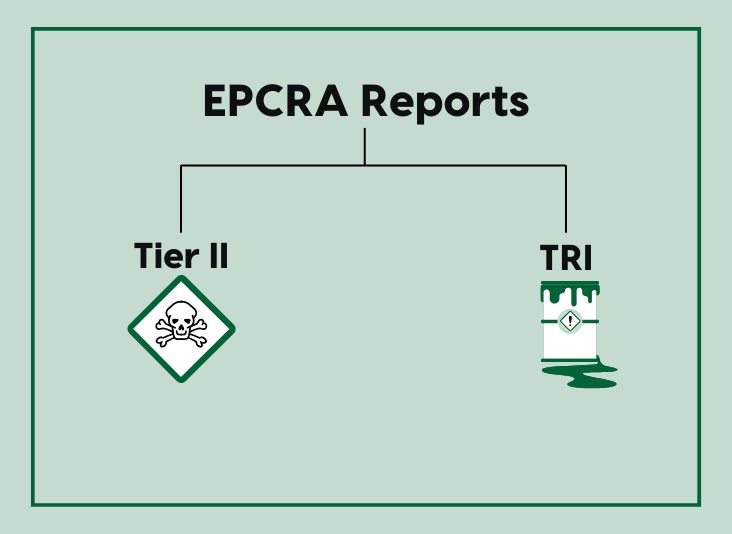Hazardous Waste Exporting and Reporting: Requirements
 As hazardous waste generators, we are all pretty familiar with the U.S. Environmental Protection Agency’s (EPA) biennial reporting requirements—even if they don’t directly apply to us. The hazardous waste export reporting requirements found in 40 CFR 262.56, however, are due on the same date and are much less familiar.
As hazardous waste generators, we are all pretty familiar with the U.S. Environmental Protection Agency’s (EPA) biennial reporting requirements—even if they don’t directly apply to us. The hazardous waste export reporting requirements found in 40 CFR 262.56, however, are due on the same date and are much less familiar.
Unless your hazardous waste is being transported from your facility to a TSDF outside the U.S., which is not usually the case, your hazardous waste transporter is generally deemed the “primary exporter” and is responsible for fulfilling all applicable federal requirements—like the annual export report. Even though the waste generator is not responsible for submitting the reports or filing notifications with the EPA, they are responsible for their waste from “cradle-to-grave” and should be educated enough to know whether their hazardous waste transporter is complying with regulations.
What are the federal requirements for exporting hazardous waste?
60 days prior to the anticipated date of shipment, the primary exporter must submit a Notification of Intent to Export which can cover up to a 12-month period and must include the following information:
- Name, mailing address, telephone number and EPA ID number of the primary exporter;
- A description of each waste type including:
- EPA and DOT classification and shipping information;
- Frequency of export and period of time waste is expected to be exported;
- Estimated total quantity of waste;
- Points of entry to/departure from each foreign country through which the waste will pass;
- Mode(s) of transport for the shipments and type of packaging;
- Information on the manner in which the hazardous waste will be treated, stored, or disposed;
- Name and address of “consignee”, or end disposal facility;
- Names of any transit countries the waste will pass through and the length of time waste will be in each country.
If the receiving country consents to the receipt of the hazardous waste, EPA will forward an EPA Acknowledgment of Consent to the primary exporter. If the receiving country or any transit countries object, the primary exporter will be notified in writing.
The EPA Acknowledgement of Consent details the terms of the receiving county’s written consent and must be attached to the hazardous waste manifest during transport (unless transported by rail). The hazardous waste manifest, itself, is slightly different when exporting waste. Among other differences, the certification that is normally found in section 16 of the Uniform Hazardous Waste Manifest has the following added on at the end: “and conforms to the terms of the attached EPA Acknowledgment of Consent.”
Similar to there being differences in format from the Uniform Hazardous Waste Manifest used in domestic shipments, there are also differences in exception reporting requirements. Again, these are responsibilities of the primary exporter. The following situations warrant the filing of an exception report:
- The primary exporter has not received a signed copy of the manifest stating the date and place of departure from the United States (US) within 45 days of shipment;
- The primary exporter has not received a written notification confirming receipt of hazardous waste by consignee within 90 days of shipment;
- The waste is returned to the US.
What are the federal reporting requirements for hazardous waste export?
Primary exporters of hazardous waste must file an export report no later than March 1 of each year. This report has no specified format but must include the following:
- A summary of the types and quantities of waste, the shipping frequency, and ultimate destination of all hazardous waste exported during the previous calendar year;
- Name, mailing address, telephone number and EPA ID number of the primary exporter;
- Calendar year covered by report;
- Name and address of every consignee, or end disposal facility;
- EPA and DOT classification and shipping information;
- Name and EPA ID# for each transporter used;
- Total quantity of waste shipped and number of shipments per notification;
- Except for hazardous waste generated by exporters of greater than 100 kilograms but less than 1000 kilograms in a calendar month, primary exporters need to provide:
- A description of waste minimization efforts undertaken during the year and any efforts to reduce the toxicity of wastes generated;
- A description of waste minimization or toxicity reduction achievements made during the year;
- A certification signed by the primary exporter.
Note: hazardous wastes that are exported should not be included on the EPA Biennial waste report unless required by your state.
You should now have a better understanding of federal export reporting requirements and the process involved with exporting hazardous waste out of the United States. This article is not meant to be an exhaustive account of the requirements, however, and the best way to get a full understanding of these requirements is to read through the federal regulations --40 CFR 262 Subpart E.
For any questions regarding compliance or upcoming reporting requirements, contact our sales team.










.png)